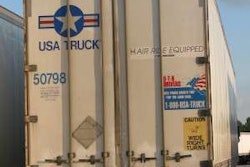While new truck orders finished strong during the last quarter of 2009, it is likely the result of end users prebuying to avoid vehicles equipped with 2010 emissions-compliant technologies, says Eric Starks, president of FTR Associates during this week’s Heavy Duty Dialogue in Las Vegas, Nev.
Starks says this wait-and-see attitude toward the new vehicles may continue throughout 2010. “2010 could be worse than 2009,” he says. “That’s a fear of mine.”
He also notes that the impact of the new emissions regulations will not be the sole determining factor one way or the other and that the strength of the general economy and freight activity will play instrumental roles toward a recovery.
Presenting a historical look at the industry’s performance, Starks predicts a new freight peak in 2014, which would be an eight-year gap from the last record peak, the same peak-to-peak timespan as the industry experienced in the recession of the early 1980s. However, he notes, it took Class 8 retail sales 15 years to hit their next peak coming out of the ‘80s recession.
More than 450,000 trucks sat idle or were substantially underutilized in 2009, and while this situation will not be corrected quickly, Starks says he expects utilization to be “a little better this year.” He says utilization of 88 percent is the threshold considered healthy and that he doesn’t expect to go above that anytime soon.
Other dynamics Starks discussed included:
Starks says talk of the industry resetting itself to a “new normal” is misleading, as all of the trends and factors affecting trucking have historical precedence.










